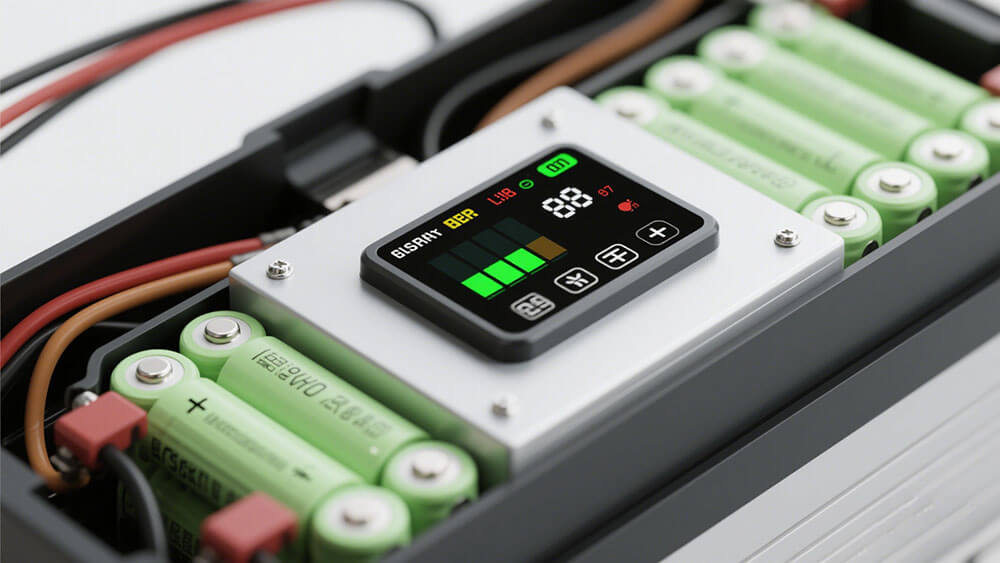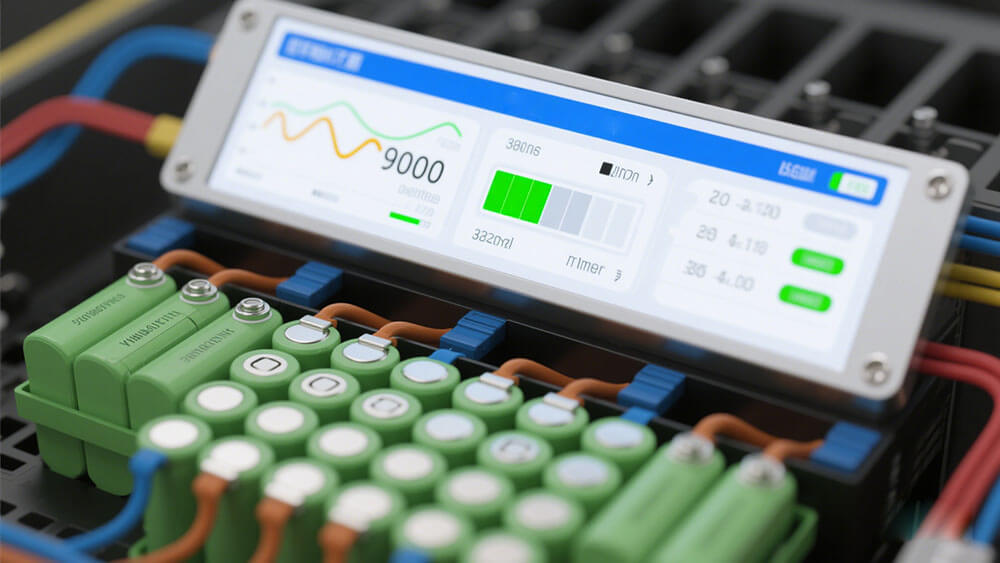Contents

A battery fuel gauge is a critical component in modern battery management systems. It monitors and estimates the remaining charge in a battery pack, ensuring optimal performance and safety. You can find it in devices like electric vehicles, where it tracks the state-of-charge and current flow. The battery fuel gauge market is growing rapidly, driven by the adoption of electric vehicles, renewable energy, and smart devices. This segment holds a 23% market share in 2024 and is projected to grow at an annual rate of 36% through 2029.
Key Takeaways
Battery fuel gauges check how full and healthy batteries are. They help devices work safely and reliably.
Correctly setting up fuel gauges gives accurate readings. This stops overcharging and makes batteries last longer.
Smart methods like counting charge and tracking resistance improve accuracy. These systems are used in gadgets and medical devices.

Part 1: Core Functions of a Battery Fuel Gauge
1.1 Monitoring State of Charge (SoC)
A dedicated fuel gauge plays a vital role in monitoring the state of charge (SoC) of a battery. It provides accurate estimations of the remaining energy, ensuring that you can rely on your battery-powered devices without unexpected interruptions. Modern fuel gauges utilize advanced techniques, such as virtual models, to estimate SoC from 0 to 100% with high precision. These models incorporate parameters like battery voltage, current, and temperature to deliver reliable results. For instance, lithium-ion batteries achieve an SoC accuracy of +/-5%, while lead-acid batteries maintain an accuracy of +/-7%. Additionally, over 94% of test cases demonstrate less than 3% SoC error under standard conditions. This level of precision ensures optimal performance for battery packs in applications ranging from consumer electronics to industrial equipment.
1.2 Tracking State of Health (SoH)
State of health (SoH) tracking is another critical function of a dedicated fuel gauge. SoH reflects the battery’s ability to store energy and deliver power effectively. Unlike SoC, SoH cannot be directly measured. Instead, it is estimated using indicators such as capacity, internal resistance, and self-discharge rates. These indicators help you assess battery performance and determine when replacements are necessary. Capacity, the leading health indicator, defines the end of a battery’s life and supports warranty obligations. By monitoring SoH, fuel gauges ensure that battery packs remain reliable and safe throughout their lifecycle.
1.3 Ensuring Battery Safety and Performance
Battery safety and performance are paramount in any application. A dedicated fuel gauge enhances safety by preventing overcharging, over-discharging, and overheating. It achieves this by continuously monitoring critical parameters and triggering protective mechanisms when anomalies occur. For example, modern fuel gauges adapt to battery aging by learning from previous discharges, improving accuracy over time. They also operate with ultra-low power consumption, ensuring no additional energy is wasted. This combination of safety and efficiency extends the lifespan of battery packs while maintaining their performance in demanding environments.

Part 2: How a Battery Fuel Gauge Works
2.1 Key Components: Sensors and Analog Front Ends
A battery fuel gauge relies on several critical components to monitor and manage battery performance. Among these, sensors and analog front ends (AFE) play a pivotal role. Sensors measure essential parameters such as voltage, current, and temperature. These measurements provide the raw data needed to assess the battery’s state of charge (SoC) and state of health (SoH). The AFE processes this data, converting it into a format that the fuel gauge can analyze. This combination ensures precise monitoring, which is vital for maintaining battery safety and efficiency.
Tip: The accuracy of these measurements directly impacts the performance of battery management systems. Factors like temperature and discharge characteristics can influence the readings, making high-quality sensors and AFEs indispensable.
2.2 Measurement Methods: Voltage Lookup, Coulomb Counting, and Impedance Tracking
Battery fuel gauges use advanced measurement methods to estimate SoC and SoH accurately. Voltage lookup is the simplest method, relying on the relationship between battery voltage and charge level. However, this method can be less reliable due to variations in voltage profiles across different battery chemistries. Coulomb counting offers higher accuracy by tracking the current flowing in and out of the battery over time. Impedance tracking combines voltage, current, and temperature data with internal resistance measurements to provide dynamic and precise estimations. This method adapts to battery aging, ensuring consistent performance.
Method | Advantages | Applications |
|---|---|---|
Voltage Lookup | Simple and cost-effective | Basic consumer electronics |
Coulomb Counting | High short-term accuracy | Wearable devices, medical equipments |
Impedance Tracking | Adapts to aging, highly accurate | Electric vehicles, industrial, robotics |
2.3 Role of Algorithms in Battery Management Systems
Algorithms are the backbone of modern battery fuel gauges. They process the data collected by sensors and AFEs to estimate SoC and SoH with high precision. Advanced algorithms, such as those used in model-based state estimation, enhance the reliability of these calculations. For instance, they account for factors like temperature fluctuations and load variations, which can otherwise lead to inaccurate readings. These algorithms also enable predictive capabilities, helping you anticipate battery performance under different conditions. By integrating such technologies, battery management systems ensure optimal operation and extend the lifespan of battery packs.
Note: Many traditional systems struggle with inaccurate SoC estimates, leading to operational inefficiencies. Advanced solutions, like those in the MPF4279x series, address these challenges by combining current and voltage measurements with sophisticated modeling techniques.

Part 3: Importance of Calibration and Accuracy
3.1 Why Accurate Readings Matter for Battery Packs
Accurate readings in battery fuel gauges are essential for ensuring the reliability and performance of battery packs. When the state-of-charge (SoC) is miscalculated, it can lead to frequent recharges or unexpected shutdowns, which may disrupt operations and reduce customer satisfaction. This is particularly critical in industries like aerospace and medical, where precise measurements are vital to prevent malfunctions. For example, a medical device relying on inaccurate SoC readings could fail during a critical procedure, posing significant risks.
Several factors influence the accuracy of fuel gauges, including temperature variations and battery aging. These variables can distort readings, making calibration a necessary process to maintain precise measurement accuracy. Regular calibration ensures that the digital readout remains reliable, even as the battery undergoes wear and tear. By achieving accuracy within a few percentage points, you can optimize the power delivery and extend the battery’s operational life.
Note: Inaccurate readings not only affect performance but can also lead to financial losses due to customer dissatisfaction or warranty claims. Industries requiring high reliability, such as robotics and industrial automation, depend on accurate fuel gauges to maintain uninterrupted operations.
3.2 How Calibration is Performed
Calibration involves aligning the fuel gauge’s algorithm with the battery’s actual performance characteristics. This process starts with high-fidelity electrical cell models created through proprietary characterization sequences. These models account for variables like voltage, current, and temperature, which are periodically measured to ensure accuracy. Validation tests simulate real-world usage scenarios, confirming the reliability of the calibration under various conditions.
Industry standards, such as IEC62133, guide the calibration process to ensure safe operating voltages. Additionally, fuel-gauge learning, a method combining coulomb counting with model parameter adjustments, refines the accuracy of SoC estimations. This iterative process minimizes errors and adapts to changes in the battery’s behavior over time.
Tip: Regular calibration not only improves accuracy but also enhances the overall efficiency of battery management systems. By maintaining precise readings, you can avoid overcharging or over-discharging, which are common causes of battery degradation.
3.3 Impact of Calibration on Battery Longevity and Safety
Calibration plays a pivotal role in extending the lifespan and ensuring the safety of battery packs. Accurate state estimations, achieved through calibration, help determine both SoC and state-of-health (SoH). These metrics directly influence the performance and reliability of the battery. For instance, precise SoC readings prevent over-discharging, which can damage the battery’s internal structure.
Factor | Impact on Battery Longevity and Safety |
|---|---|
Accurate State Estimation | Determines SoC and SoH, directly affecting battery performance. |
Cell Balancing | Ensures uniform charging and discharging, maximizing battery life. |
Thermal Management | Maintains optimal temperature, crucial for performance and longevity. |
Calibration | Maps electrochemical behavior, improving SoC and SoH accuracy. |
Data Quality | Enhances state estimations, improving overall battery management system performance. |
By calibrating fuel gauges, you can also improve thermal management, which is critical for preventing overheating. This ensures that the battery operates within safe temperature ranges, reducing the risk of thermal runaway. Furthermore, calibration supports cell balancing, which distributes power evenly across the battery pack, preventing premature wear on individual cells.
Sustainability Insight: Proper calibration aligns with sustainable practices by reducing waste and extending the usable life of battery packs. Learn more about sustainability efforts here.
FAQ
What is the difference between SoC and SoH in a battery fuel gauge?
SoC measures the remaining charge in your battery, while SoH evaluates its overall health and ability to store energy effectively.
How often should you calibrate a battery fuel gauge?
You should calibrate it periodically, especially after significant battery aging or environmental changes, to maintain accurate readings and optimal performance.
Can a battery fuel gauge prevent overcharging?
Yes, it monitors critical parameters and triggers protective mechanisms to prevent overcharging, ensuring safety and extending your battery’s lifespan. ⚡
To learn more about how to choose a battery meter, please consult us.





